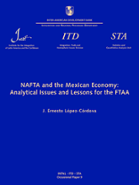NAFTA and the Mexican Economy: Analytical Issues and Lessons for the FTAA
Date
Aug 2001
EDITOR
INTAL
Suriname gained autonomy from Holland in domestic affairs in 1955 and full political independence in 1975. "Self-sufficiency" -particularly in economic terms- became a strong motif in Suriname politics thereafter. Yet the inward-looking development policies pursued by successive governments after independence proved to be self-defeating and, after some initial growth, helped bring about a steady decline in national income. Between 1980 and 1988, GDP declined by 1.2 percent a year on average, per capita income dropped by over 2 percent a year, and foreign debt rose from 3 percent to 27 percent of GDP. Although rising bauxite prices brought temporary relief to the economy at the end of the decade, it became increasingly clear that prolonged growth required fundamental changes in the country¿s development strategy. After civilian control was restored in 1991, Suriname thus began taking concrete steps to open its economy, emerge from its isolation, and forge a new regional identity. Suriname¿s efforts in this respect are the subject of this paper. Some concrete initiatives undertaken by Suriname to broaden and diversify its economic links are briefly identified, and the many barriers that remain to be overcome in that area are highlighted. Then the authors examine from a theoretical point of view, the costs and benefits of regional integration, which has been one of the key components of Suriname¿s increasingly outward-oriented development agenda. Subsequent sections provide a more detailed analysis of Suriname¿s recent integration efforts, and how these may influence its future development prospects.



